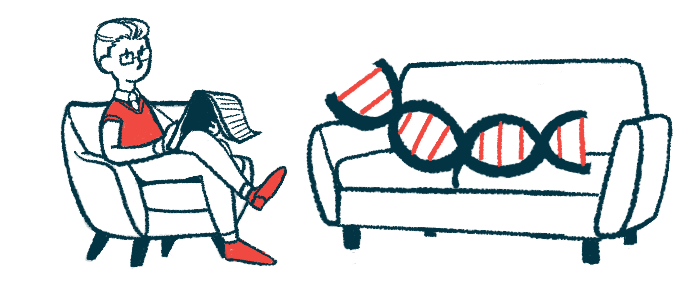First Rett syndrome patient dosed with TSHA-102 gene therapy
Phase 1/2 REVEAL study still recruiting up to 12 women at a site in Canada

The first patient has been dosed with TSHA-102, an investigational gene therapy by Taysha Gene Therapies, to treat Rett syndrome.
The Phase 1/2 trial, dubbed REVEAL (NCT05606614), is still recruiting up to 12 women with Rett syndrome at its single site in Montreal, Canada. Early safety data from the patient will be reported at Taysha’s upcoming virtual R&D Day June 28. Registration to attend is available online.
The company also plans to ask the U.S. Food and Drug Administration (FDA) for permission to begin testing the gene therapy in the U.S. A similar request is planned in the U.K.
“This is a momentous day for the Rett syndrome community,” Sabrina Millson, president of the Ontario Rett Syndrome Association, said in a press release. “As a mom to a daughter living with Rett syndrome and the president of the Ontario Rett Syndrome Association here in Canada, I know firsthand how this disease leads to debilitating symptoms, including difficulties in communication, mobility and breathing.
“The potential for a treatment that addresses the underlying cause of disease and slows progression or potentially prevents the onset of disease with early intervention is truly remarkable,” Millson said. “We’re pleased to collaborate with Taysha Gene Therapies in an effort to bring a gene therapy treatment that could meaningfully change the lives of patients and their caregivers.”
Most cases of Rett are caused by variants in the MECP2 gene, which provides instructions for making a protein of the same name. Known to regulate the activity of other genes, the MECP2 protein is critical for brain development and function.
Occurring primarily in females, a lack of MECP2 leads to Rett symptoms such as developmental delays, intellectual disabilities, inability to communicate, seizures, motor and breathing problems, and a shortened life expectancy.
Most disease-causing MECP2 mutations occur spontaneously so not all cells carry the genetic defect, a so-called mosaic pattern. Studies suggest a small portion of mutated cells is sufficient to cause symptoms.
How does TSHA-102 work?
Administered into the spinal canal fluid, TSHA-102 carries a shorter but functional version of MECP2, packaged in a harmless adeno-associated virus.
Because healthy cells already produce sufficient MECP2, the therapy incorporates a miRNA-responsive auto-regulatory element, or miRARE, which fine-tunes protein levels to prevent the protein’s overproduction, which may cause harmful side effects.
“By targeting the regulation of gene expression on a cell-by-cell basis, we believe our miRARE technology has the ability to enable safe expression of MECP2, which may help address the risks associated with both under- and over-expression resulting from the mosaic pattern of MECP2 silencing,” said Sukumar Nagendran, MD, Taysha’s president and head of research and development.
In mice, TSHA-102 increased the levels of MECP2 without leading to overproduction in healthy cells. The therapy also extended survival by more than four times and delayed the onset of motor symptoms.
REVEAL is the first-in-human study to evaluate TSHA-102’s safety and preliminary effectiveness in women with Rett syndrome caused by loss of function variants in MECP2.
“Dosing of the first adult patient marks the beginning of clinical evaluation of TSHA-102 in the Phase 1/2 REVEAL trial, and, to our knowledge, the first time a gene therapy has ever been evaluated in a clinical setting for the treatment of Rett syndrome,” Nagendran said. “This is a significant milestone that furthers our quest to bring a potentially transformational gene therapy to patients and families living with Rett syndrome.”
Trial participants receive a single injection into the lower spine. Dose escalation will evaluate two doses sequentially, with an initial dose of 5E14 vector genomes per kilogram (vg/kg) followed by a second dose of 1E15 vg/kg.
Before the second patient can be dosed, an independent data monitoring committee will review the safety data from the first patient about six weeks after dosing to determine if Taysha can proceed. These data will be reported at R&D Day.
“Based on its unique and compelling technology targeting the genetic root cause of Rett syndrome, TSHA-102 has the potential to transform care by addressing a significant unmet medical need for patients with this devastating and currently incurable disease,” said Elsa Rossignol, MD, REVEAL’s principal investigator. “The dosing of the first patient in this important clinical trial represents a critical advancement in evaluating the potential of gene therapy for Rett syndrome. It is a privilege to be part of this important endeavor.
“In the name of all affected families, I thank Taysha for bringing this potentially transformative therapy from the bench to the bedside,” Rossignol said.







